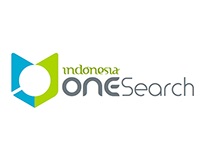PERILAKU PENGGUNA ALUN-ALUN KOTA BEKASI PADA MASA PANDEMI COVID-19
Abstract
Abstract: Alun-alun Kota Bekasi is a public space that is crowded with users even though there is an appeal from the government to stay away from crowds during the COVID-19 pandemic. This research aims to determine the behavior of Alun-alun Kota Bekasi users during the COVID-19 pandemic with a quantitative approach through behavior mapping analysis, time budget and descriptive statistics. Behavior mapping is done in 2 ways: person and place centered mapping. Place centered mapping results in activity types, activity dominance, and density distribution. Person centered mapping results in user movement patterns. Meanwhile, time budget analysis indicates the time consumption of users while in the square. Statistical data is used to support the analysis of user characteristics of the square. Data was collected through observations and questionnaires using incidental sampling techniques to 30 visitors and 30 street vendors. The spatial behavior of users is influenced by the environment, socioeconomic characteristics and visiting patterns. However, COVID-19 has not affected the trading patterns of street vendors. Through the analysis, visitors and street vendors are dominated by people who are knowledgeable about how to prevent COVID-19, but the resultant behavior is contradictory. The resultant behavior tends to ignore health protocols and users behave as usual as if there is no pandemic.
Keywords: Public Space, User Behavior, City square
Abstrak: Alun-alun Kota Bekasi merupakan ruang publik yang ramai dikunjungi pengguna walaupun adanya himbauan dari pemerintah menjauhi keramaian di masa pandemi COVID-19. Penelitian ini bertujuan untuk mengetahui perilaku pengguna Alun-alun Kota Bekasi pada masa pandemi COVID-19 dengan pendekatan kuantitatif melalui analisis behavior mapping, time budget dan statistik deskriptif. Behavior mapping dilakukan dengan 2 cara: person dan place centered mapping. Place centered mapping menghasilkan jenis aktivitas, dominasi aktivitas, dan sebaran kepadatan. Person centered mapping menghasilkan pola pergerakan pengguna. Sedangkan analisis time budget menunjukkan konsumsi waktu pengguna. Data statistik digunakan untuk mendukung analisis karakteristik pengguna alun-alun. Pengumpulan data dilakukan melalui observasi dan kuesioner dengan teknik insidental sampling pada 30 pengunjung dan 30 PKL. Melalui analisis, didapati bahwa perilaku spasial pengguna dipengaruhi oleh lingkungan, karakteristik sosial-ekonomi dan pola kunjungan. Namun, COVID-19 tidak mempengaruhi pola berdagang PKL. Pengunjung dan PKL didominasi oleh masyarakat yang paham tentang cara pencegahan COVID-19, namun perilaku yang dihasilkan bertolak belakang. Perilaku yang dihasilkan cenderung abai terhadap protokol kesehatan dan pengguna berperilaku seperti biasa seolah tidak terjadi pandemi.
Kata Kunci: Ruang Terbuka Publik, Perilaku Pengguna, Alun-alun
Full Text:
PDFReferences
Adhitama, M. S. (2013). Faktor Penentu Setting Fisik Dalam Beraktivitas Di Ruang Terbuka Publik “Studi Kasus Alun – Alun Merdeka Kota Malang.” Review of Urbanism and Architectural Studies, 11(2), 1–9. https://doi.org/10.21776/ub.ruas.2013.011.02.1
Von Braun, A., Thomas, Y., & Sax, H. (2015). Do high-touch surfaces in public spaces pose a risk for influenza transmission? A virologic study during the peak of the 2009 influenza A(H1N1) pandemic in Geneva, Switzerland. American Journal of Infection Control, 43(12), 1372–1373. https://doi.org/10.1016/j.ajic.2015.07.012
Carmona, M., Steve, T., Tim, H., & Tanner, O. (2003). Second Edition Public Spaces Urban Spaces: The Dimensions Of Urban Design. In Elsevier Ltd.
Carr, Stephen., Leanne G Rivlin., Mark Francis., Andrew M. Stone. (1993). Environment and Behavior Series Public Space.Cambridge University Press.
Gannika, Lenny & Sembiring, E. (2020). Tingkat Pengetahuan dan Perilaku Pencegahan Coronavirus Disease 2019 (COVID-19) Pada Masyarakat Sulawesi Utara Lenny Gannika. NERS: Jurnal Keperawatan, 16(2), 83–89.
Ghel. (2020). Public Space & Public Life during. Ghel People.
Hella, J., Morrow, C., Mhimbira, F., Ginsberg, S., Chitnis, N., Gagneux, S., Mutayoba, B., Wood, R., & Fenner, L. (2017). Tuberculosis transmission in public locations in Tanzania: A novel approach to studying airborne disease transmission. Journal of Infection, 75(3), 191–197. https://doi.org/10.1016/j.jinf.2017.06.009
Laurens, Joyce Marcella. (2004) . Arsitektur dan Perilaku Manusia. GRASINDO.
Pradani, S. W. (2020). Perilaku Masyarakat di Ruang Terbuka Publik Alun- Alun Kabupaten Blora Community Behavior in Public Open Space of Blora District Square. Jurnal TATA LOKA, 22(1), 50–60.
Putra, E. A. H., & Khadiyanto, P. (2014). Pengaruh Privatisasi Ruang Terbuka Publik Taman Tabanas Gombel Semarang Terhadap Tingkat. Jurnal Teknik PWK, 3(3), 446–460.
Ramadhan, N. A., Purnamasari, W. D., & Setyono, D. A. (2020). Konsep Penataan Ruang Terbuka Publik berdasarkan Pola Aktivitas Pengguna (Studi Kasus Alun-alun Kota Bekasi). Review of Urbanism and Architectural Studies, 18(1), 27–38. https://doi.org/10.21776/ub.ruas.2020.018.01.3
Uma Sekaran, R. B. (2003). Research Methods for Business Research Methods for Business. In John Wiley & Sons, Inc. (Issue 1).
Setiawan, Haryadi B. (2010). Arsitektur, Lingkungan dan Perilaku. Gajah Mada University Press.
Sun, X., Wang, L., Wang, F., & Soltani, S. (2020). Behaviors of seniors and impact of spatial form in small-scale public spaces in Chinese old city zones. Cities, 107(September 2019). https://doi.org/10.1016/j.cities.2020.102894
Lima, K., Kawasan, P., Di, K., & Kota, P. (2012). Karakteristik Aktivitas Pedagang Kaki Lima Pada Kawasan Komersial Di Pusat Kota Studi Kasus: Simpang Lima, Semarang. Teknik, 30(3), 162–170. https://doi.org/10.14710/teknik.v30i3.1892
Wiryomartono, B. (1995). Seni Bangunan dan Seni Bina Kota di Indonesia: Kajian mengenai konsep, struktur, dan elemen fisik kota sejak peradaban Hindu-Budha Islam hingga Sekarang. PT Gramedia Media Utama.
DOI: https://doi.org/10.17509/jaz.v7i1.60628
Refbacks
- There are currently no refbacks.
Copyright (c) 2024 Kristantri Rahayu, Nurini Nurini

This work is licensed under a Creative Commons Attribution-ShareAlike 4.0 International License.





